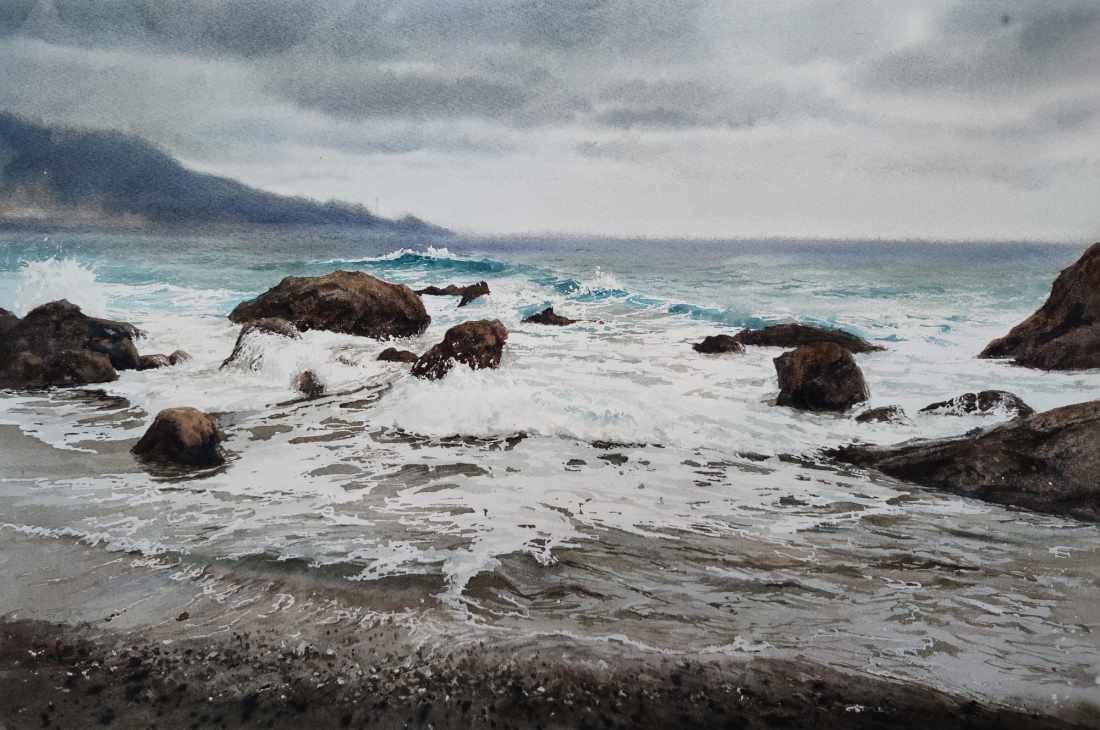
Wind. Winter in Batiliman, 2022. Watercolour, 38 x 56 cm
When starting a collaboration with a new artist, RakovGallery traditionally releases an interview with them. This time, we introduce to our viewers Natalia Nesterova, a watercolour artist. Inspired by the everchanging nature of the sea, its unstoppable freedom and endless beauty, Natalia Nesterova specialises exclusively in seascapes. In fact, watercolour is rather poorly represented in Russian art galleries. Nevertheless, it is a very special form of art, which is found on the verge of graphic arts and painting. In our conversation, the watercolour artist tells us about the special techniques she uses, wxplains the ways in which a certain set of colours helped her forming her own recognisable style, and we also learn why the artist’s main source of inspiration is closely related to sports.
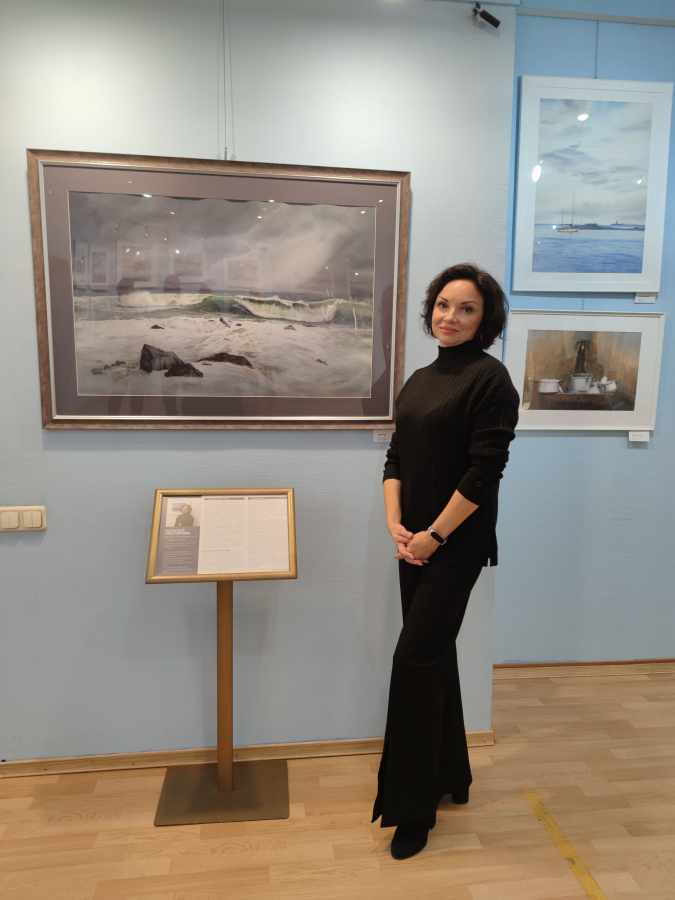
It’s difficult to determine when exactly my creative journey has begun... At the age of eleven, I was very much impressed my father’s artworks (he specialised in graphic arts and worked in gouache). I drew a dandelion with pencils, and, to me, it looked very true-to-life, so I started drawing all the time. I used to work in different materials: produced pieces of graphic art with pencils and charcoal, after the birth of my daughter I have started working in colour, using dry pastel and, sometimes, oil. At that period I had my own business, and, thus, had practically no time and energy to work as an artist.
When my daughter grew up and decided to enter an art school - there were problems with studying the technique of watercolour, and I decided to help... As a result I have found myself doing a personal experiment “I draw every day” for 1 year. By the end of this period, the first artworks had already been accepted for an exhibition in Moscow, and I realised that I cannot stop making watercolours, there was a strong desire, almost a vital need to express myself in watercolour.
I love pastel dearly, I respect the techniques of oil and charcoal, but my favourite technique is watercolour, largely due to its 'difficult' character. It simply turned out to be a 100% “my” technique. I love everything about it: the random colour spots on wet paper, and its unexpected surprises, and the smooth fluidity along with the impulsive brushstroke. It is as multifaceted as life itself.

Wind. Winter in Batiliman, 2022. Watercolour, 38 x 56 cm
What is the essence of your own signature style and what is the inspiration to you?
I like the expression of Pablo Picasso: “Inspiration exists, but it must find you at work.” And I admire everything in Nature - the gray sky, the bright sun, the green colours of spring, but the main thing for me is the sea. I believe that I have always lived with the sea in my heart. For several years I went in for sailing, raced in regattas, slept on boats, and I was in storms. I was showered with heavy rain and salty spray of waves, sometimes it was freezing on board of a yacht during winter races, and I slept under the endless summer sky at the stern... But when Her Majesty Watercolour came into my life, I had to make a choice - and I have chosen to be an artist. Therefore, my watercolours depicting boats, regattas and yachts are echoes of exactly that period of my life.
What is the most difficult thing about the watercolour technique, in your opinion?
The watercolour technique is both simple and complex at the same time. You “simply” need to learn to understand the moisture content of the paper and build a strategy depending on this, and, probably, the most important thing is not to be afraid of the unfortunate surprises which could happen sometimes. When I started learning to depict the sea, I definitely wanted to paint it realistically. It was important for me to express what I saw and experienced before at the races on yachts. But, unfortunately, it was hardly possible to achieve my goals studying only at the master classes in watercolour. So I had to invent some techniques almost myself.
Most importantly, I only work in a certain colour scheme. My brightest works have no more than six colours, and the majority is actually created using only three colours! I have been studying colouristics, colour and pigments for a long time and I am still learning.
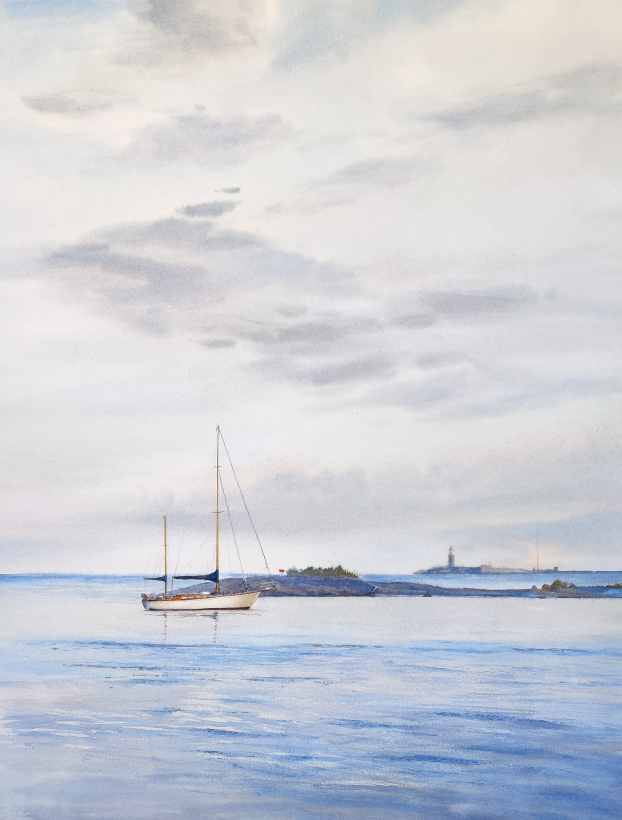
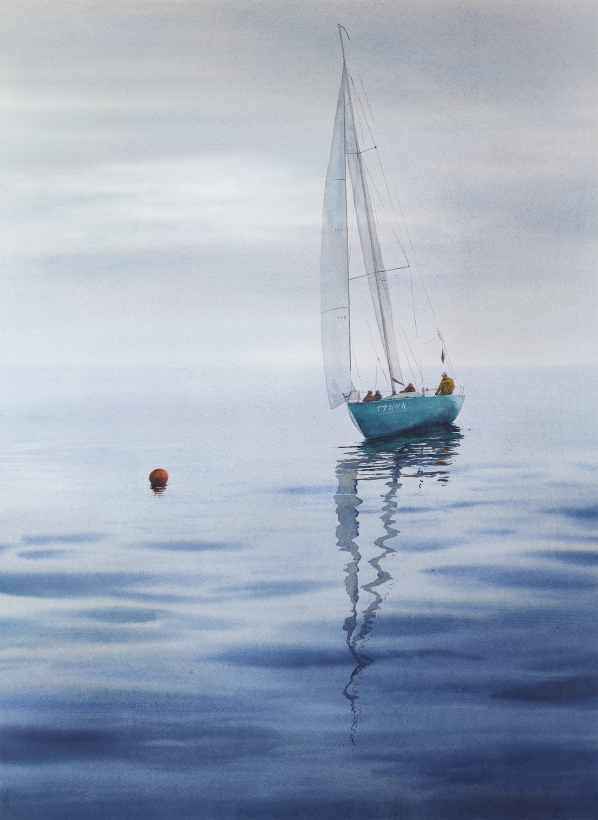
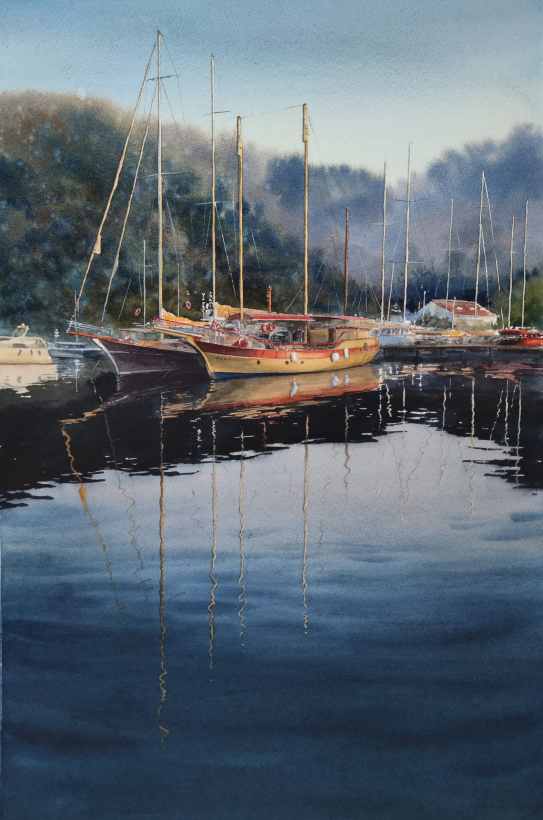
What is special about the materials you use when creating watercolours?
I stopped using white paint in my works several years ago, because dense gouache paint looks completely alien, in a combination with transparent and light watercolour. White watercolour paint could not help with the task of depicting sea foam, so little by little I began to use masking fluid - this is liquid latex, which is applied to the surface of the paper in the initial stage of work and is removed after the paint layer has been applied. Still the effect of liquid latex is not enough. Lately, I decided to stop using the masking fluid, leaving it only for a limited number of cases, now I use my own “bypassing” technique.
As for the quality of paints, I believe that every artist should think about the future of their artwork. After all, it would be sad to the snow-white seafoam turning yellow over time or the colourful sunset turning into a brown sky. Therefore, I use paints only from professional brands (including foreign ones), and I conduct my own tests on the ability of paints to retain their colour even in the sun. The test is ongoing for more than 1.5 years, and I continue my experiment, mercilessly discarding low quality paints.
Can you tell a story associated with your artworks?
Well, many times I was completely covered by a wave while making pictures to realise my future artworks... And once, my artwork “Towards the Sun” was selected to an exhibition in Moscow, but I could not find it. At first, we thought that it had somehow been lost at another exhibition. I was upset, but then calmed down. And then by chance (I am not the fan of spending much time on social networks) I saw the pictures from an exhibition in South Korea, just a bunch of photos with a woman pointing at my 'lost' artwork! In South Korea! I have forgotten that this piece went there because it has been abroad for a year or more. In general, each artwork has its own personal story, both in terms of inspiration and creation. Artists cherish their pieces as their “children”.
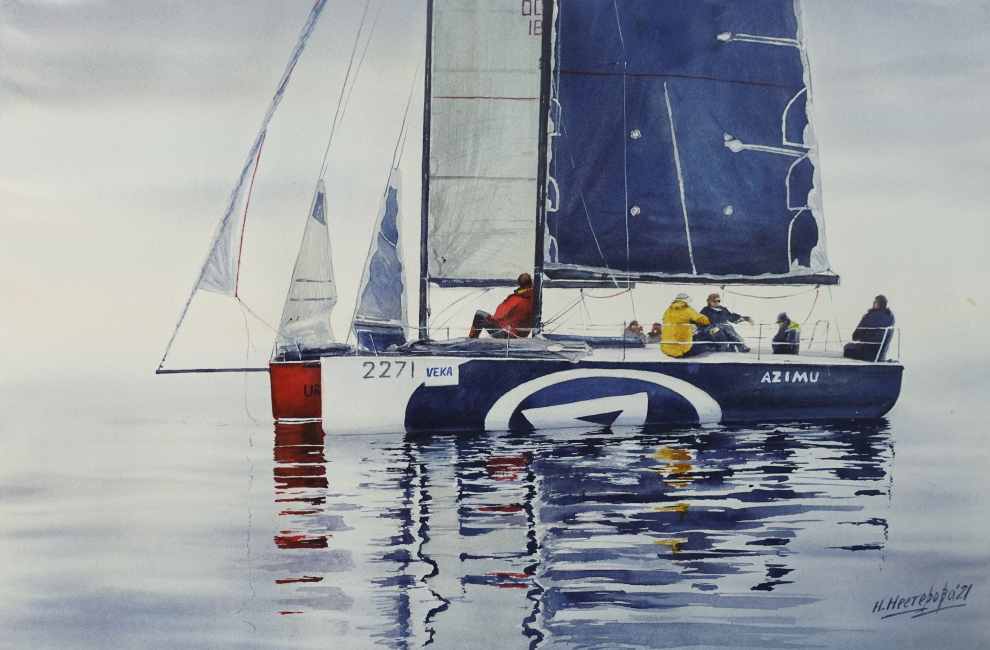
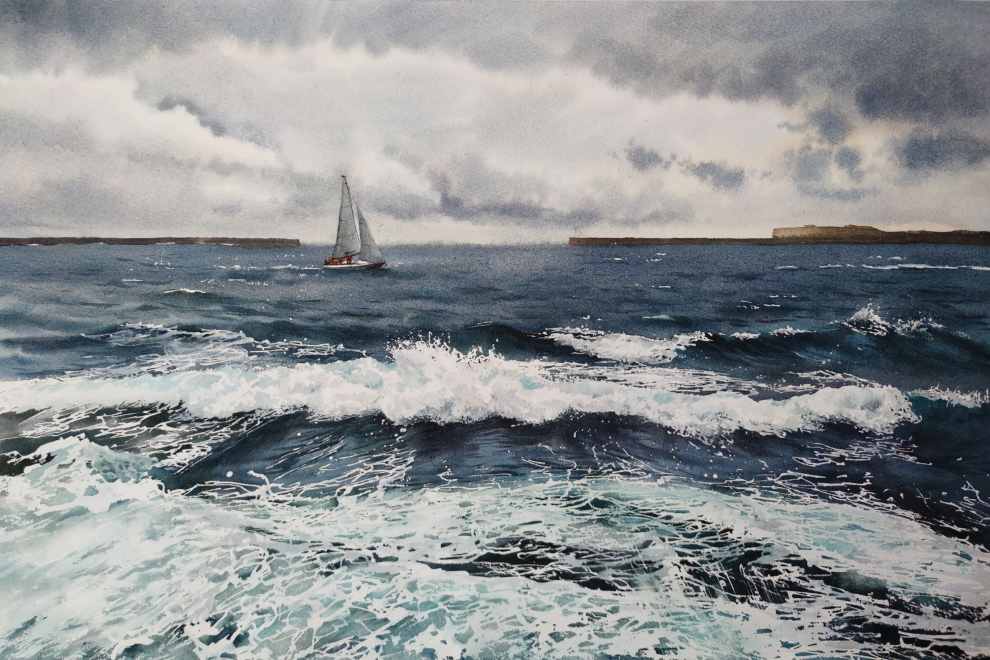
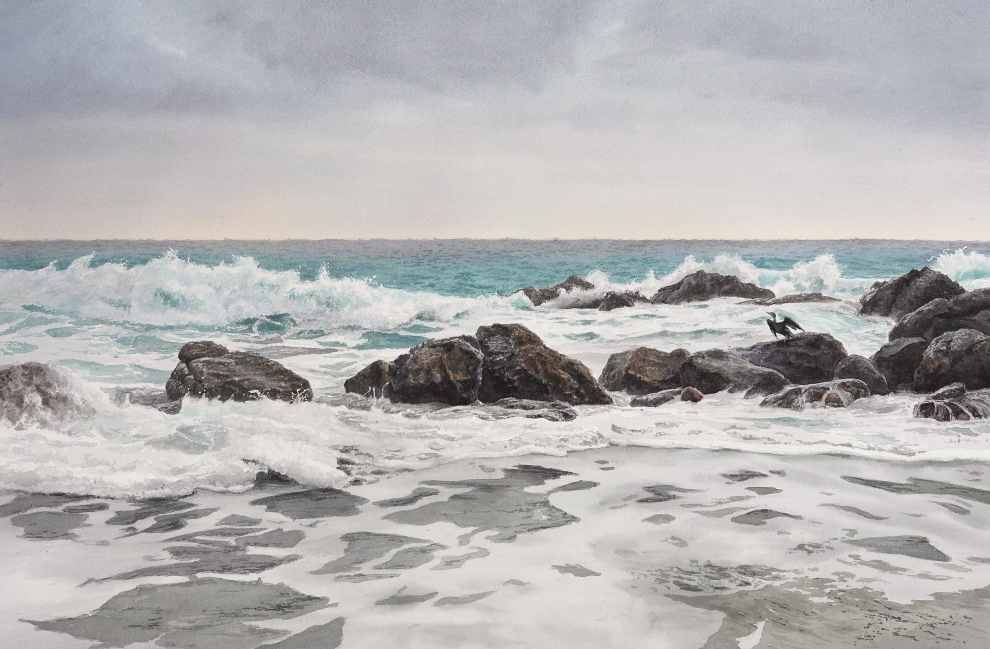
Have you been influenced by the famous marine painter - Aivazovsky, or other artists?
Of course, Aivazovsky is the great marine painter, and I am also from the same region. There was even a situation... when I had surgery, I took a book with his paintings to the hospital. So I may say that we were at the same hospital with him! We went together to watch the sunrise over the sea, walked along the hospital embankment, he helped me to get through this short but difficult period. By the way, soon afte the hospital I have started painting, with my left arm in a cast, but I still worked. One of the artworks from that period is still available. Now it is memorable for me.
In Crimea, the Aivazovsky gallery has been closed for renovations for several years, so I first saw one my favorite paintings by Aivazovsky - “The Black Sea” in the Tretyakov Gallery. I even burst into tears out of excitement... I did not expect to see it in the original, and that moment was so powerful.
Among marine artists, who are active at present, I admire the work of Stanislav Zoladz, a hyperrealist master whose artworks are filled with light and true love for this world.
I enjoy the details and technique of the French hyperrealist Thierry Duval, and the pieces of the Spanish artist Cesc Farré are great with their spontaneity and lightness.
What are your professional plans for the future?
My love for the sea and Aivazovsky inevitably led me to the idea of making large-format watercolours. The power of impression increases along with the scale. Therefore, I aim to produce a 1.5x2/2.5 meter watercolour. The process of “reaching” the large size requires time and skill. At present, I work on the format 66x102 cm, which is the maximum available to me, but soon I hope to try producing a 1.5 meter watercolour, and the next piece would be a 2.5 meter.